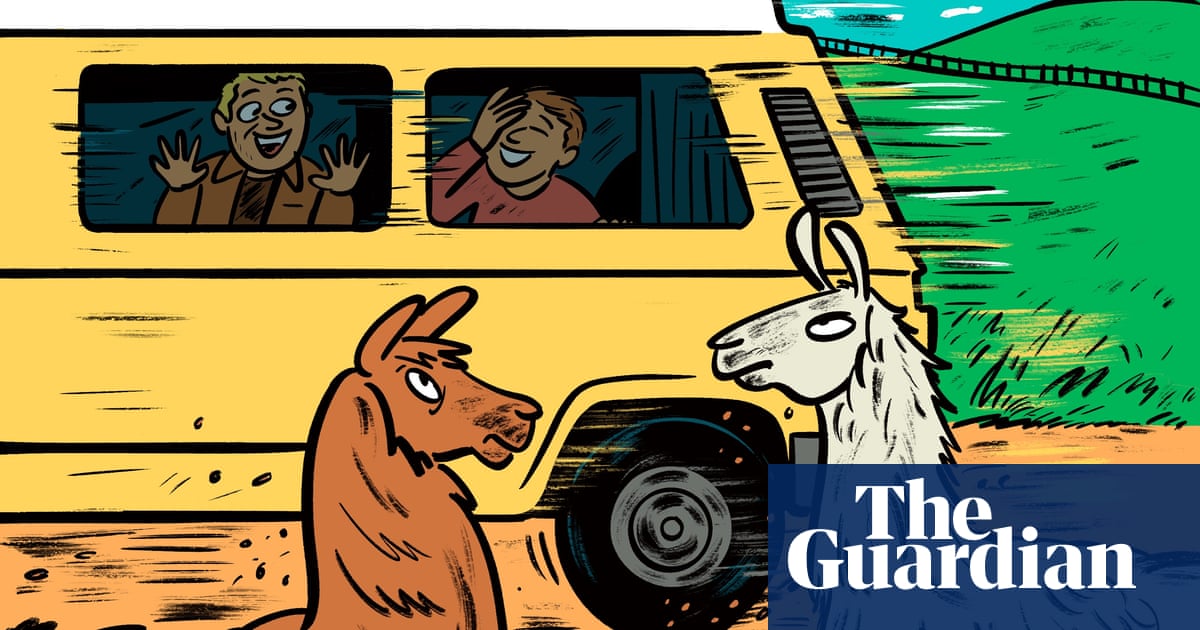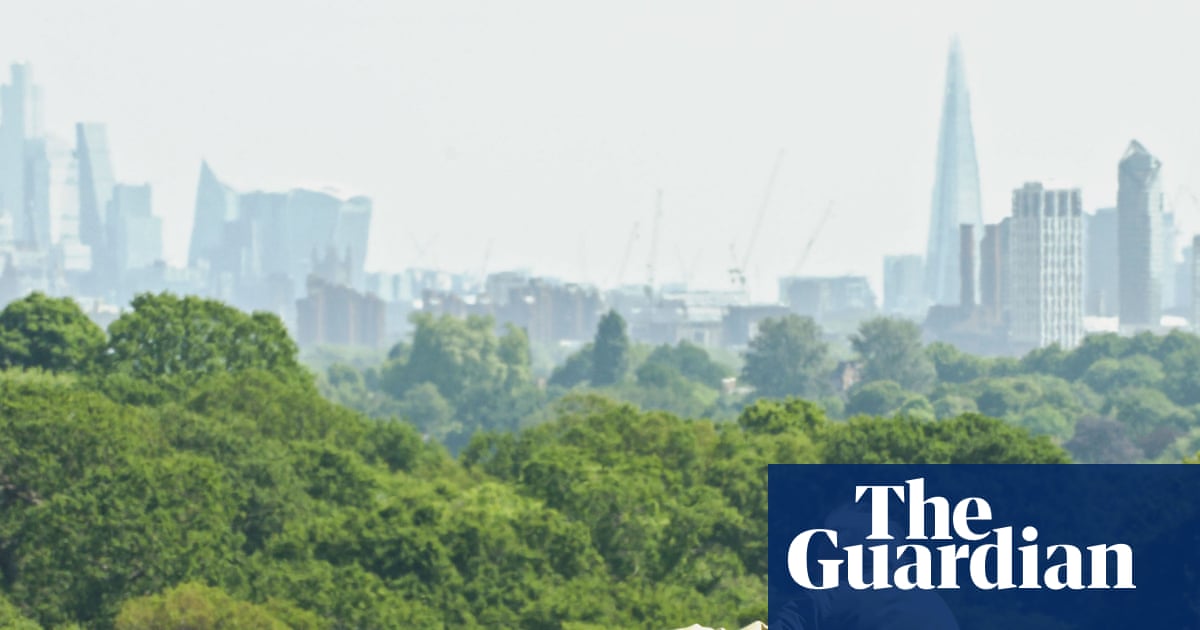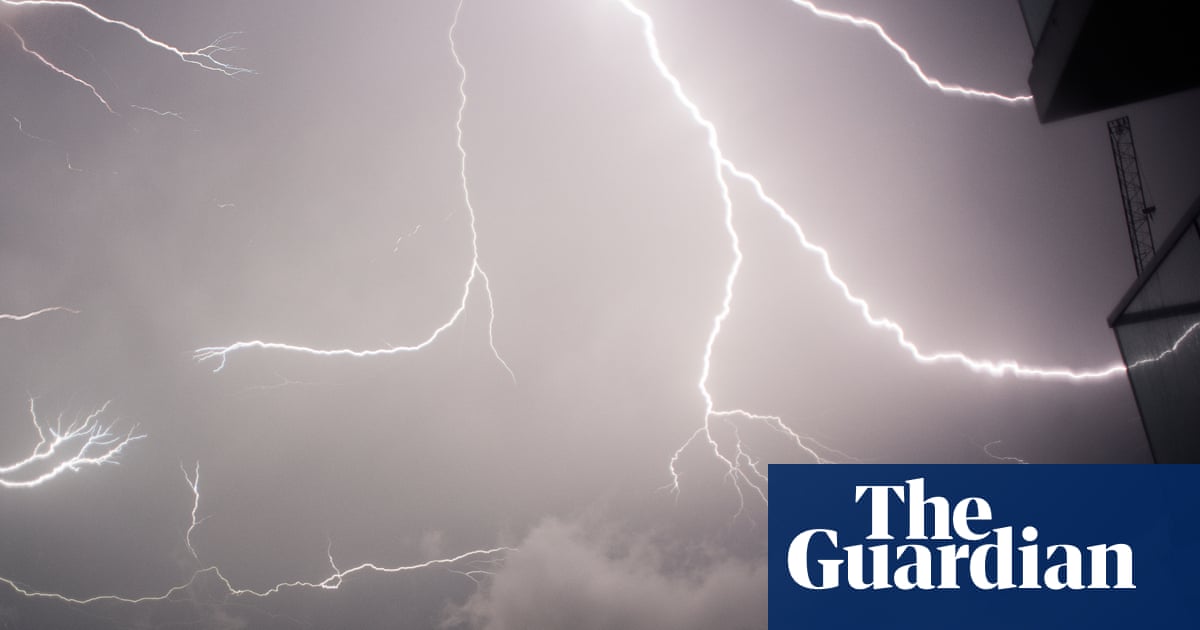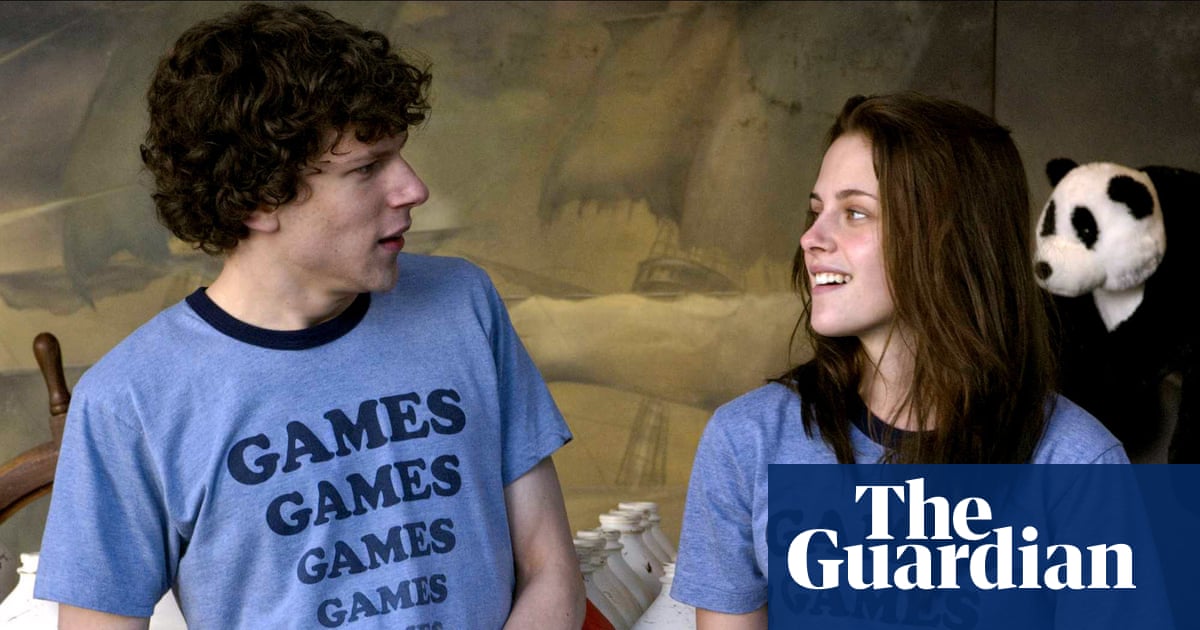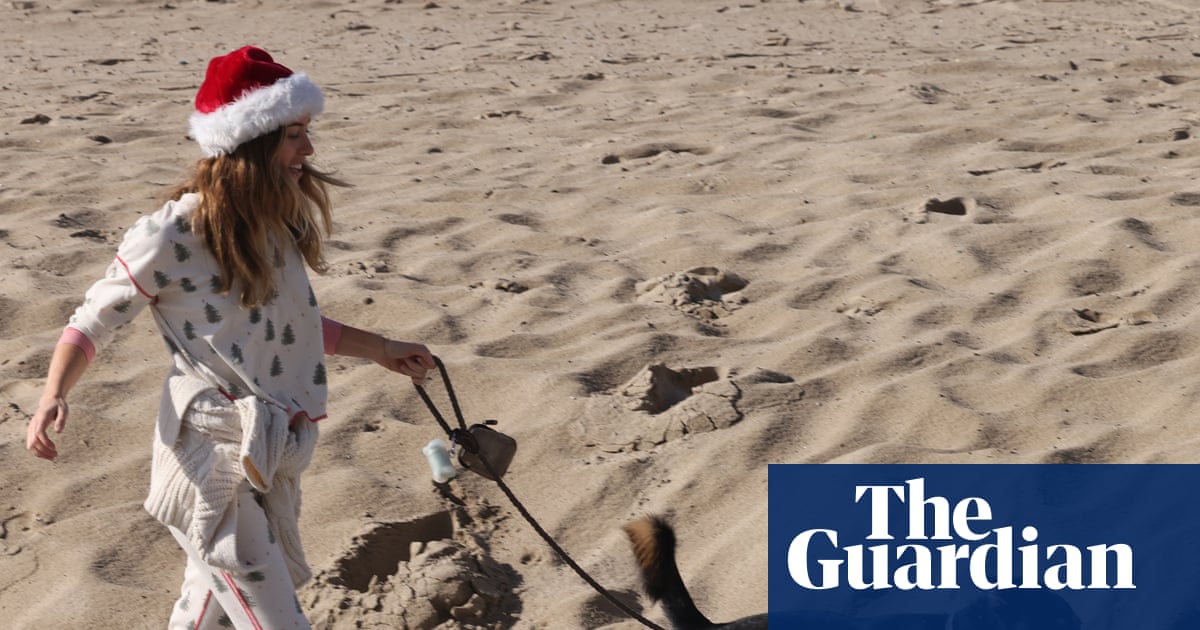Horsemen known as yegüerizos take part in the traditional saca de las yeguas (collecting of horses) in Doñana national park, near the coast in south-western Spain. The annual event, which has been running since 1504, involves collecting semi-wild horses, which are herded to Almonte town to be cleaned, branded and blessed by a priest before being sold. Horses that are not sold are returned to the park and freed to roam until the next year
Photograph: Alberto Diaz/EPA
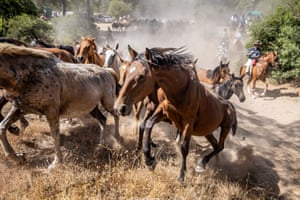
Flying fish … a huge bluefin tuna, about 7ft long, leaps out of the water while hunting garfish off the south coast of Devon, UK. The photographer, who happened to be kayaking nearby, reported that the tiny garfish were flipped tens of feet into the air as the tuna emerged
Photograph: Rupert Kirkwood/BNPS
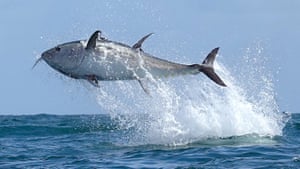
One of the four beavers released into the wild at Purbeck Heath national nature reserve last March. They have had an eventful summer: one beaver left her mate and swam around the point to Swanage, where she set up home in a stream by a busy road, next to a public toilet block. National Trust officials duly took her back to the reserve, where her mate welcomed her back with, apparently, no hard feelings (they were seen rubbing noses). Another of the four beavers has sadly died, perhaps due to salt water exposure
Photograph: Andrew Matthews/PA
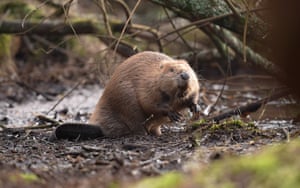
A police officer in St Pölten, west of Vienna in Austria, tracks the progress of a moose as he explores the town. The moose, nicknamed Emil, is thought to have come from Poland via the Czech Republic, and has been wandering around Austria for nearly three weeks, to residents’ delight. His Facebook fan page has 10,000 members
Photograph: Helmut Fohringer/APA/AFP/Getty Images
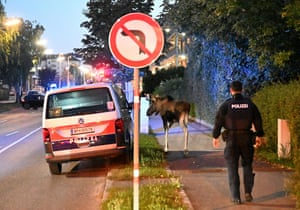
Anteaters tentatively leave their boxes as they are released into the wild in El Ávila national park, a forested, high-altitude area overlooking Caracas, Venezuela …
Photograph: Ariana Cubillos/AP
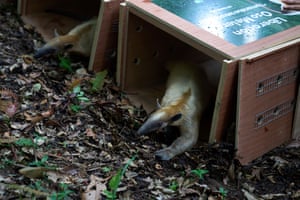
… and this one escapes its crowd of admiring fans by climbing up a tree towards the canopy
Photograph: Ariana Cubillos/AP
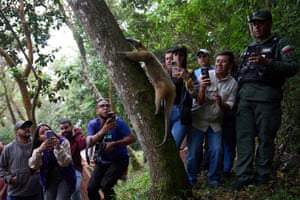
Five newly hatched black swan chicks test the water at Kuğulu park in Ankara, Turkey
Photograph: Anadolu/Getty Images
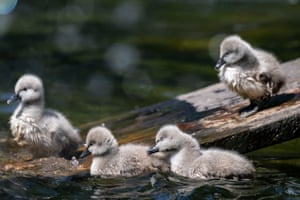
Milk delivery … a herd of 60 cows brought chaos to a housing estate after escaping from a nearby farm in Buxton, Derbyshire, England. Police were called after worried residents spotted the animals trampling on flower beds and munching their lawns. The herd took more than an hour to round up. Buxton Police Safer Neighbourhood Team rose to the occasion and said the cows had “had absolutely no intention of mooooving on”
Photograph: Buxton Police SNT/SWNS
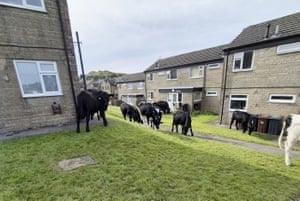
Dolphins swim off the port of Le Havre, Normandy, France
Photograph: Lou Benoist/AFP/Getty Images
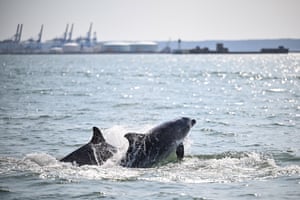
Wild elephants forage through a rubbish dump in Tissamaharama, southern Sri Lanka, highlighting the growing problem of how to handle our ever-increasing waste without harming wildlife
Photograph: Krishan Kariyawasam/NurPhoto/Shutterstock
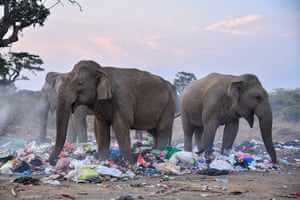
Two of the Clapham fox babies (see past instalments of Week in Wildlife) have grown into juveniles: here they are enjoying the sunshine, grooming each other and scratching their fleas in south London. August and September are times when juveniles usually move off into new territory, but some will stay and live as a family with their siblings and parents
Photograph: Anna Watson/Alamy Live News
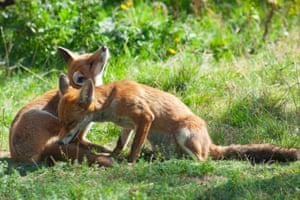
Swans swim on the river Main near the European Central Bank (the skyscraper visible in the background) in Frankfurt, Germany
Photograph: Michael Probst/AP
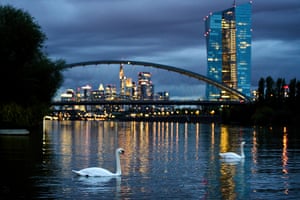
The results of Butterfly Conservation’s Big Butterfly Count are in, and while the numbers are a vast improvement on 2024’s record lows, the charity has warned that urgent measures are still needed to reverse long-term decline. The brimstone, pictured here, saw a slight uptick this year. See our gallery of the top 10 butterflies
Photograph: Butterfly Conservation
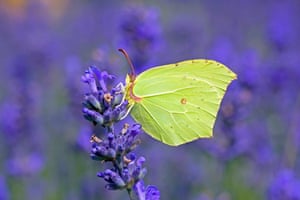
A duck surfaces on a channel at a city park in Riga, Latvia
Photograph: Sergei Grits/AP
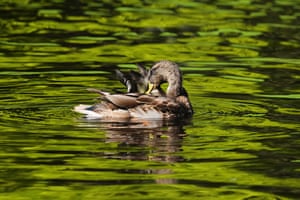
A colourful blue-throated barbet looks out for fruit and insects in a tree in Siliguri, West Bengal, India
Photograph: Diptendu Dutta/Zuma Press Wire/Shutterstock
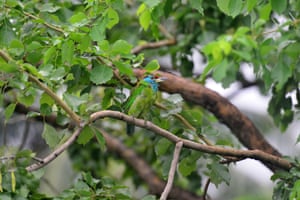
Stags battling in Tatton Park in Knutsford, Cheshire, England
Photograph: William Lailey/SWNS
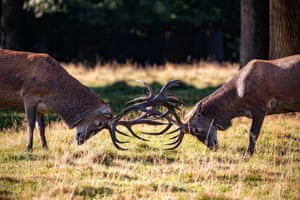
A red squirrel on the Isle of Wight, UK. The island is a haven for the squirrels, which are genetically distinct from European ones. Researchers have found signs that populations on opposite sides of the island are starting to mix and cross-breed for the first time, which will help strengthen the gene pool
Photograph: Wight Squirrel Project/PA
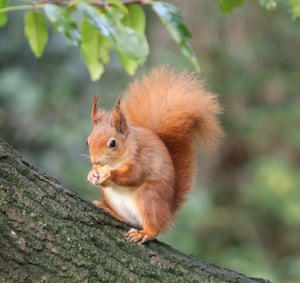
Endangered wild goats in Tunceli, Turkey
Photograph: Anadolu/Getty Images
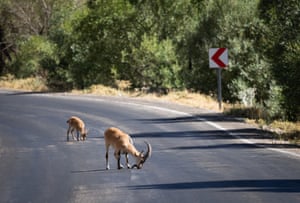
A koala recovers from treatment at the Endeavour Veterinary Ecology centre at Toorbul, north of Brisbane, Australia. Authorities there have just approved an anti-chlamydia vaccine for koalas, which are badly affected by the disease. The team at the University of the Sunshine Coast, who developed the vaccine, called it an “incredible milestone”
Photograph: Darren England/AAP
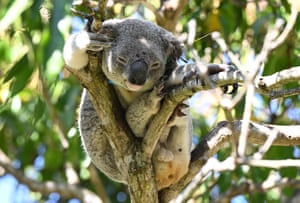

 3 months ago
44
3 months ago
44



